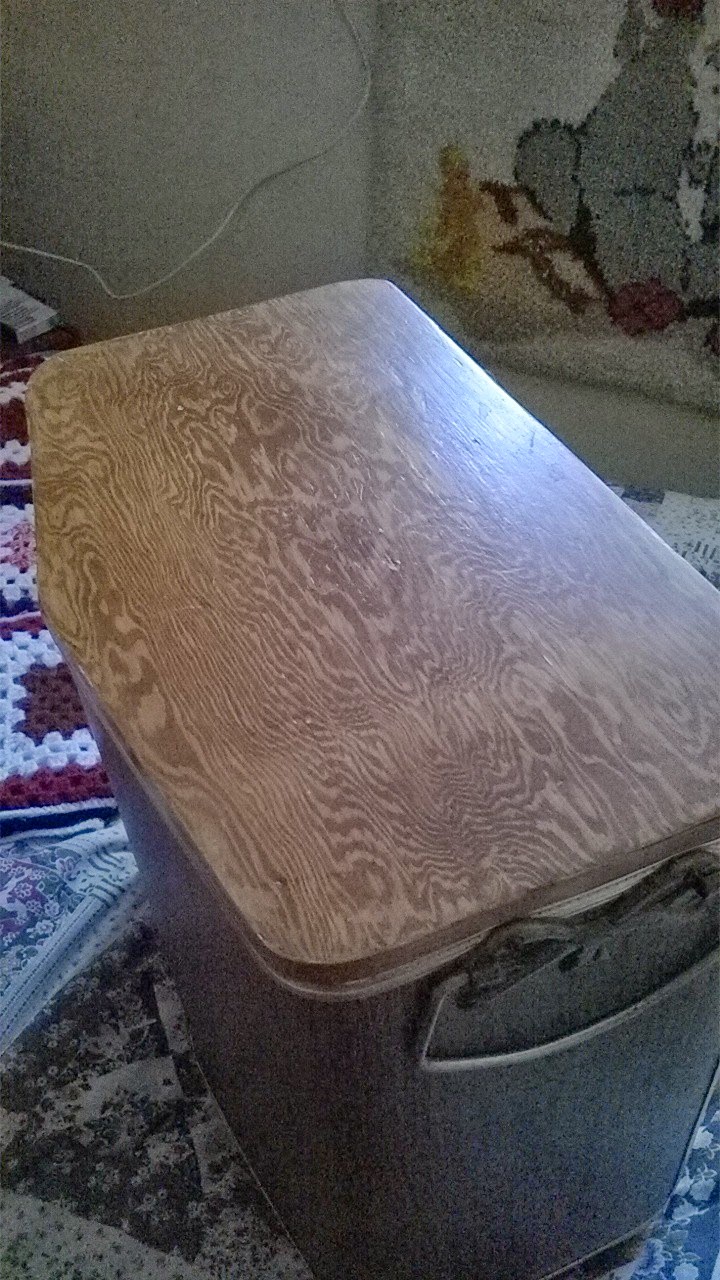 |
| you can see the none-shrinking wood filler that I put in the voids in the plywood. Now I wouldn't use plywood, but this was long before I had a table saw, or clamps or skills. |
This laundry hamper has been in the upstairs hallway since the early 70's and the replacement lid was made by me in the very early 1980's. It was probably one of my earliest jig saw projects. I took the broken lid off and used it as a template and cut the top out of 3/4 plywood. I remember staining it and telling a friend of mine from school that it was zebra wood.
This plywood project is also interesting to me because the edge of the plywood was veneered. I remember buying a roll of veneer and going out of my mind putting it on with masking tape. However, I must have been successful as the top is still there and the edge is still hidden.
 |
| Makita 3.7 amp VS. Orbital Jig Saw |
This is actually the jig saw that I have in my shop and while I turn to the band saw often times, I would not be without my little jig saw. I wrote a blog in April 2012 saying that a jig saw was an important and useful tool for an "Apartment Tool Kit" but it is also useful for any wood shop. If push came to shove the band saw could go and I would keep my jig saw.
I have another little project to share.
I really think that every wood shop should have a wood burning pen in drawer some place. Mine is a pen with one tip and don't pretend to be an artist, but the burned lines add a bit of eye appeal to simple projects. In this case there isn't any paint or ink that would last on a fingernail brush, but burned lines will be fine.
As you skills improve you may not be able to build furniture because of lack of space or cash. I believe that if you can't build large complicated things in your shop you should, keep building small projects and add to them with burning, carving or some other technique. Remember much of the shop time is good for the soul as much as anything else.
cheers, ianw



No comments:
Post a Comment